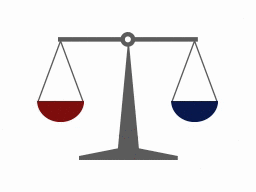Alright, let’s set the scene.
Imagine you’re a roofer in the bustling world of shingles and gutters.
You’re the best at what you do, but here’s the twist – if your online presence is as visible as a needle in a haystack, you’re missing out big time.
This is where SEO struts in, your digital superhero ready to shine the spotlight on your business.
It’s not just a fancy buzzword; it’s the difference between being the neighborhood’s best-kept secret and becoming the go-to roofing maestro.
 The Importance of SEO in the Roofing Industry
The Importance of SEO in the Roofing Industry
First off, why should roofers care about SEO?
In simple terms…
SEO is your golden ticket to the online visibility fiesta.
It’s crucial because when someone’s roof starts impersonating a leaky faucet, where do they turn?
That’s right, Google.
And if you’re not popping up in those searches, you’re as good as invisible.
SEO is like that friend who knows all the right people and gets you into the coolest parties – except these parties are filled with potential customers.
 Competitive Advantage in Local Markets
Competitive Advantage in Local Markets
In the roofing world, your battleground is local.
You’re not just competing with Joe down the street but also with big names in town.
Here’s where SEO flexes its muscles, giving you an edge by making sure your business pops up when….
Mrs. Johnson frantically searches for “emergency roof repair near me” at 2 AM.
Driving Leads Through Online Visibility
Think of SEO as your business’s online megaphone.
It amplifies your presence, so when someone’s scouring the internet for roofing services, your business stands tall like a skyscraper on page one of search results.
This visibility isn’t just about showing off
…it’s about driving leads.
The higher you rank, the more likely customers will click through to your website, and voilà – you’re generating leads as smoothly as a well-laid roof.
Generating More Leads with Roofing SEO
Now, let’s talk strategy.
How do we turn SEO from a buzzword into a lead-generating powerhouse?
Targeting the Right Audience
It’s all about getting your message to the right people.
Using SEO to target your audience is like hosting a dinner party and making sure to invite only those who love roofing talk.
With the right keywords and content, you attract an audience that’s actually interested in what you have to offer.
No more shouting into the void!
 Climbing the Search Ranking Ladder
Climbing the Search Ranking Ladder
There’s a direct link between rocketing up the search rankings and getting more business inquiries.
Think of Google’s first page as the VIP section of a club.
If you’re there, you’re seen as credible, trustworthy, and the go-to guy for roofing.
This visibility translates into more calls, emails, and inquiries.
It’s like being the most popular kid in school, but for your roofing business.
Specific Benefits of SEO for Roofing Businesses
Lastly, let’s zoom in on some specific perks of SEO for your roofing empire.
Boosting Brand Awareness
Roofing SEO is a brand awareness magician.
It takes your brand from being a whisper in the wind to a name that’s on the tip of everyone’s tongue.
When your brand consistently appears in search results, it’s like having a billboard on the busiest street of the internet.
Attracting Quality Traffic Relevant to Roofing Services
This is where the magic really happens.
SEO for Roofers isn’t just about attracting any traffic; it’s about attracting the right traffic.
It’s like setting up a magnet that pulls in folks who are actively seeking roofing services.
This means the traffic coming to your site isn’t just browsing… they’re looking to get their roofs fixed, pronto!
For roofers, diving into the world of SEO is like putting on a jetpack in a foot race.
It boosts your visibility, edges out the competition, and most importantly, brings in the leads that are the lifeblood of your business.
So, grab your digital toolbox and let’s get optimizing!
 Understanding SEO for Roofing
Understanding SEO for Roofing
Let’s break down this SEO beast into shingle-sized, easy-to-nail parts.
SEO Fundamentals for Roofing
Tailored Concepts for Roofing Industry
SEO for roofers isn’t about casting a wide net; it’s about precision.
Think of your services and target them like a skilled roofer targeting a leak. It’s about understanding what your potential customers are searching for – be it “roof repair,” “best roofing materials,” or “emergency roofing services.”
Your content should be the answer to their roofing prayers.
 How Search Engines Work
How Search Engines Work
Picture search engines as those discerning clients who inspect every inch of a roofing job.
They crawl through your website, analyzing everything from the quality of your content to your site’s structure and user experience.
Their goal?
To serve users the most relevant, high-quality results.
If your website is the well-constructed roof in a sea of leaky competitors, you’ll rank higher.
Roofing SEO in Customer Acquisition
For roofers, SEO is like your sales team that never sleeps.
It’s out there, 24/7, attracting potential clients.
When someone types “how to fix a leaking roof,” and your article or video pops up, you’re not just solving their problem
…you’re introducing your brand.
It’s a subtle yet powerful way of acquiring customers who might remember you when they need bigger roofing jobs.
Key Performance Indicators (KPIs)
Moving on to the meaty part – measuring your Roofing SEO success.
Because what’s the point of all this effort if you can’t measure it, right?
Tracking and Measuring SEO Success
This is like doing a regular roof inspection but for your website.
Are you reaching your target audience?
Is your website traffic growing?
Are you climbing up the search engine ranks?
Tracking these factors will tell you if your Roofing SEO efforts are solid or if there’s a leak that needs fixing.
 Key Metrics to Monitor
Key Metrics to Monitor
Alright, time to get specific. What should you be looking at?
Organic Traffic…
This is the number of visitors coming to your site from search engines.
Think of it as foot traffic into your digital store. A rise in organic traffic is a good sign that your Roofing SEO strategies are on point.
Keyword Rankings…
This is about understanding where your website stands in the search engine pecking order for specific keywords.
Are you on the first page for “best roofing services” or buried on page ten?
Climbing these rankings is like climbing a ladder – the higher you go, the more visible you are.
Remember, SEO for roofing is not a sprint
…it’s a marathon.
It’s about building credibility, trust, and visibility over time.
With the right strategies, patience, and a bit of that roofer’s resilience, you’ll see your website climb up those rankings, just like a skilled roofer scaling a steep roof with ease and expertise.
Let’s hammer down those SEO strategies and make your roofing business the talk of the digital town!
 Introduction to the Customer Journey
Introduction to the Customer Journey
First up, what’s this customer journey all about?
Imagine it as a roadmap that every potential customer travels, from realizing they need a new roof to finally ringing you up for a quote.
Understanding this journey is crucial because it helps you tailor your Roofing SEO strategy so that you’re meeting potential customers at every turn with the right signposts.
Step 1: Recognizing the Need
This is where the journey kicks off.
It often starts with an “Oh no!” moment
…maybe a homeowner notices a leak, or they’re doing a renovation and realize their roof looks like it’s from a haunted house.
These triggers are your cue.
They lead to the homeowner heading to their trusty search engine with queries like….
“roof repair near me” or “how to fix a leaky roof.”
Your roofer SEO mission?
…To appear in these searches.
Step 2: The Search Begins
Now, we’re in the thick of it.
The homeowner is typing away, looking for local roofing services.
This is where your roofer SEO game needs to be strong. Using the right keywords, especially those with a local flavor, is crucial.
Why?
Because when Mrs. Smith types “best roofer in Springfield,”
…you want to be the Superman that shows up to save her day.
Local SEO isn’t just important; it’s your bread and butter in this step.
Step 3: Website Interaction
The potential customer has landed on your website – SCORE!
But the game’s not won yet.
Your website needs to be as welcoming as a cozy living room.
It should be easy to navigate, have content that answers all their roofing questions, and, most importantly, have clear calls to action.
Think of your website as a digital salesperson… it should guide, inform, and nudge the visitor toward picking up the phone or submitting a form.
Step 4: Decision-Making Process
Alright, your visitor is interested,
…but they’re not yet convinced.
They start digging deeper, looking at your reviews, your portfolio, and any trust signals like certifications or awards.
This is where persuasive and informative content can tip the scales in your favor.
Show them why you’re the best, back it up with evidence, and address any concerns they might have.
It’s about building trust and credibility.
Step 5: Taking Action
Here we are, the final stretch.
The customer is ready to take action.
But if your contact information is harder to find than a needle in a haystack,
…you’ve lost them.
Make sure contacting you is as easy as a Sunday morning – prominent contact details, a simple inquiry process, and a prompt response can make all the difference.
It’s like laying down a red carpet leading straight to your services.
Navigating the customer journey in roofing SEO is about being there at every step with the right information, assurance, and ease.
It’s about guiding potential customers smoothly from “I have a problem” to “I want this roofer to solve it.”
Get this journey right, and you’ll turn those searchers into loyal customers, one click at a time.
 Content Planning
Content Planning
Crafting Pages for Each Service and City
Think of your website as a map of your services.
Each page should be a clearly marked destination – one for each service you offer and each city you serve.
This isn’t just good for users… it’s a feast for search engines too.
They love seeing organized, dedicated pages for specific services and locations.
Local SEO with Specific Pages
If you’re the go-to roofer in Springfield, then you need a page that shouts…
“The best roofing services in Springfield!”
It’s about targeting those local searches where people are looking for services in their area.
Remember, local roofer SEO is like local gossip…
it spreads fast and works wonders.
Keyword Focus Strategies
On each page, your keywords should be as focused as a roofer’s eye on a leaky spot.
For instance, on your “Roof Repair” page, ensure your content consistently includes relevant keywords.
It’s like laying down a path of breadcrumbs for search engines to follow.
Building Topical Authority
Authoritative Content Creation
Your content should be so knowledgeable and helpful that it practically wears a professor’s hat.
It’s not just about what you say, but how you say it.
Authoritative content positions you as the expert
…the go-to roof whisperer.
 Improving Search Rankings
Improving Search Rankings
Search engines love an expert.
When your content is recognized as authoritative, search engines are more likely to rank it higher.
It’s like getting a gold star in the giant report card of the internet.
Relevance and Search Intent
Aligning with Target Audience Searches
Your content should mirror what your audience is searching for.
Are they looking for “emergency roof repair” or “eco-friendly roofing options”?
Knowing this lets you create content that’s as relevant as a raincoat in a downpour.
User Search Intent Examples
In roofing, search intents can range from “how to fix a leaky roof” to “roofing contractor reviews.”
Understanding these intents is crucial in shaping content that not only answers their queries but also guides them to your services.
Page Optimization Strategies
Optimizing URLs, Titles, and Descriptions
Your URLs, titles, and meta descriptions should be crisp, clear, and catchy.
They’re the billboards of the SEO highway.
A well-optimized title and URL can make the difference between being noticed or ignored.
URL Structure and Title Tags
These are the backbone of on-page SEO.
A clean URL structure and descriptive title tags help search engines understand and categorize your content better.
It’s like putting a clear label on each box in a storeroom.
Content Quality and Strategy
Engaging and Informative Content
Your content shouldn’t just be good; it should be “roof-leakingly” great.
It needs to engage, inform, and even entertain.
The goal?
To keep readers on your page – because the longer they stay, the better it is for your roofer SEO.
Using Multimedia Elements
A picture speaks a thousand words, and a video probably a million.
Including images, videos, and infographics can make your content more engaging and shareable.
Plus, it breaks up text, making it easier to digest.
 Integrating Various Keywords
Integrating Various Keywords
Sprinkle local, short, and long-tail keywords throughout your content like you’re seasoning a gourmet meal.
It’s all about striking the right balance – enough to be flavorful but not overpowering.
Local Roofer SEO Optimization
Effective Location Page Creation
Each location page should be a love letter to the area you serve.
Include local landmarks, address local roofing needs, and maybe even a shoutout to the local high school team.
It’s about making each page resonate with the local audience.
Driving Regional Business
Local roofer SEO is your bread and butter.
It’s what puts you in front of potential customers in your area.
In the vast world of the internet, it helps you stand out in your own backyard.
There you have it, roofers and digital craftsmen alike!
With this blueprint in hand, you’re all set to build an on-page SEO strategy that’s as solid and reliable as the roofs you craft.
Let’s get optimizing and make your roofing business the talk of every local online community!
 Site Architecture and Technical Aspects of SEO for Roofers
Site Architecture and Technical Aspects of SEO for Roofers
The Tech Trio – JavaScript, XML Sitemaps, Structured Data
These are your power tools. JavaScript should be used judiciously as it can impact loading times and crawlability.
XML sitemaps are like a blueprint for search engines, guiding them through your site, and structured data is like giving search engines a cheat sheet about your site’s content.
Responsive Design and Page Speed
Mobile-First for the Win
With more people browsing on their phones than ever before, having a mobile-first design is like having a roof that’s ready for all seasons.
It’s crucial for user experience and, therefore, for roofer SEO.
Speeding Up Load Times
A slow-loading website is like a leaky roof…
it’ll drive people away.
Optimizing images, minimizing code, and leveraging browser caching are some of the ways to plug these leaks and speed up your site.
 Well-Structured, SEO-Friendly Website
Well-Structured, SEO-Friendly Website
Think of your website as a well-organized tool shed. Everything should be in its place, easy to find, and efficiently set up. This means having a logical navigation structure, clean URL paths, and a clear hierarchy. It’s all about making both users and search engines happy.
Handling Technical Issues
Common Technical SEO Problems
In the SEO world…
things like 404 errors and broken links are like broken tiles on a roof – they need to be fixed.
Use tools like Google Search Console to identify and fix these issues.
404s, hreflang, Canonicals, and 301 Redirects
These are like the special tools in your belt.
404s should be cleaned up or redirected, hreflang tags are essential for multilingual sites, canonical tags help avoid duplicate content issues, and 301 redirects smoothly guide users and search engines from old to new pages.
Content-Related Technical Issues
Managing Thin and Duplicate Content
Thin content is like a thinly insulated roof – not very effective.
Beef it up with quality, substantial content.
Duplicate content confuses search engines, so identify and rectify it with canonical tags or by tweaking the content to be unique.
Keyword Cannibalization
This happens when multiple pages target the same keyword, essentially eating into each other’s effectiveness.
It’s like having two roofers doing the same job – inefficient.
Resolve this by merging similar content or differentiating the pages to target varied aspects of the keyword.
Site Security and Keywords in URL
 Website Security for Roofing SEO
Website Security for Roofing SEO
A secure website is like a secure home; it builds trust.
HTTPS isn’t just for e-commerce sites.
It’s a ranking factor and crucial for user trust, so ensure your site is using HTTPS.
Keywords in URLs
Including keywords in your URLs is like having your business sign visible from the street.
It helps search engines understand what the page is about and can aid in rankings, but don’t overdo it.
Keep it natural and readable.
Strong Internal Linking Silos
Robust Internal Linking
This is like the framework of your roof.
Internal links help search engines understand the structure and hierarchy of your site.
They distribute page authority throughout your site and help users navigate more efficiently.
By mastering these technical SEO elements, you’re not just fixing leaks; you’re building a robust, weatherproof roof over your digital house.
It’s the foundation upon which all your other Roofing SEO efforts will rest, ensuring your roofing business stays high and dry in the SERPs.
 Off-Page SEO Strategies
Off-Page SEO Strategies
Off-page SEO is like the weatherproofing of your digital house.
It’s what happens outside your website but has a significant impact on how your site is perceived and ranked.
Let’s explore these strategies that can elevate your roofing business in the digital realm.
Building Authority and Trust
Link-Building for Domain Authority
Think of link-building like networking in the roofing community.
The more reputable roofers recommend you, the more trustworthy you appear.
In the digital world, this means getting quality websites to link to yours.
This not only drives traffic but also enhances your domain authority, signaling to search engines that you’re a credible, authoritative source.
Pursuing Quality Backlink Opportunities
Not all links are created equal.
A link from a well-respected home improvement site is like a recommendation from the mayor, while a link from a low-quality directory is like a nod from a random passerby.
Focus on building relationships with industry leaders, participating in relevant online communities, and creating shareable content to attract these high-value backlinks.
 Page Speed Impact
Page Speed Impact
A slow website is a huge turn-off, like a roofing job that takes forever to complete.
Improving your site’s loading time is essential for keeping visitors happy and engaged, which in turn affects your search rankings.
Use tools like Google PageSpeed Insights to identify and fix slow-loading elements.
Boost Roofing SEO with Security Features
Just as a secure roof protects a house, a secure website builds trust with visitors and search engines.
Implementing HTTPS not only encrypts data but also contributes positively to your site’s SEO performance.
It’s a clear signal that you’re serious about security, which search engines reward.
Anchor Text Strategies
Effective Anchor Texts in External Links
Anchor texts are the visible, clickable words in a hyperlink.
They’re like signposts, guiding both users and search engines to understand the context of the link.
When other sites link to you, having keyword-rich anchor texts can help improve your rankings for those keywords.
However, it’s crucial to keep it natural.
Too many keyword-rich anchors can look spammy and might trigger search engine penalties.
 Balancing Keyword-Rich and Natural Anchor Texts
Balancing Keyword-Rich and Natural Anchor Texts
Striking the right balance is key.
Your anchor text profile should look as natural as possible, with a mix of branded, keyword-rich, and generic anchor texts.
It’s like a well-balanced roof; too much weight on one side, and things start to look unstable.
In the world of off-page SEO, think of yourself as a roofer working on the external appeal and structure of your digital property.
By focusing on building authority, enhancing user experience, and strategically managing your anchor texts, you’re not just patching up holes; you’re giving your entire digital presence a solid, weather-resistant upgrade.
In the digital roofing industry, user engagement and experience are like the insulation and ventilation of your house – essential for a comfortable, efficient home.
Let’s delve into how these elements play a crucial role in roofer SEO and converting visitors into leads.
Understanding User Engagement
 Significance of Dwell Time and Bounce Rate
Significance of Dwell Time and Bounce Rate
Dwell time is like how long a customer spends admiring your roofing handiwork, while bounce rate is akin to how many leave after just a quick glance.
In SEO terms, longer dwell times and lower bounce rates signal to search engines that your content is valuable and engaging, which can boost your rankings.
Improving User Engagement
To keep users engaged, think like a host at a party.
Offer them interesting, relevant content (appetizers), make it easy to navigate your site (show them around the house), and encourage interaction (spark conversations).
Analyze user behavior on your site using tools like Google Analytics to see where they spend time and where they drop off, and adjust accordingly.
Enhancing User Experience (UX)
 UX Elements Impacting SEO
UX Elements Impacting SEO
User experience on your website should be as smooth as a new roof installation.
Elements like site speed, mobile-friendliness, intuitive navigation, and clear calls-to-action are all crucial.
They don’t just make your site more user-friendly; they also positively impact your Roofing SEO.
Practical Steps for Better UX
Start by ensuring your website loads quickly and is easy to use on mobile devices.
Organize your content logically, and make sure it’s easy to find what they’re looking for – be it service details, contact information, or customer testimonials.
Regularly update your site to keep it fresh and engaging.
Conversion Optimization
Turning Visitors into Leads
This is where you seal the deal.
Your website has attracted visitors – now it’s time to convert them into leads.
This is like showing a potential client the exact type of shingles they need for their house.
Enhancing Website Design for Conversions
Ensure your website design is not just aesthetically pleasing but also strategically structured to lead visitors toward making a decision.
This can include prominent display of contact information, persuasive call-to-action buttons, and using forms effectively to capture leads.
Test different layouts and elements (like colors, button sizes, and placement) to see what works best in converting visitors.
By focusing on user engagement and experience, you’re essentially ensuring that your digital house is not just structurally sound but also welcoming and functional.
This approach not only satisfies your visitors but also signals to search engines that your site is a valuable resource, thus improving your SEO.
With a finely-tuned strategy, your roofing website can effectively attract, engage, and convert visitors, much like a well-built roof protects and enhances a home.
Navigating the SEO for Roofers landscape is akin to choosing the right tools and methods for a roofing project.
Each option has its merits and drawbacks, and understanding these is key to making an informed decision.
Let’s explore the various SEO strategies and set some realistic expectations.
Choosing the Right SEO Strategy
DIY SEO
This is like fixing your own roof.
It’s cost-effective, and you have complete control.
But, just like DIY roofing, it requires time, effort, and a steep learning curve.
You need to stay updated with SEO best practices and be ready to invest a significant amount of time.
Pros: Cost-effective, full control over strategies, personal learning and growth.
Cons: Time-consuming, steep learning curve, easy to make mistakes without expert knowledge.
 Hiring a Roofer SEO Agency
Hiring a Roofer SEO Agency
Think of this as hiring a team of expert roofers.
They bring experience, expertise, and resources.
Agencies stay on top of trends and have access to advanced tools and analytics.
However, this comes at a cost and requires relinquishing some control.
Pros: Expert knowledge, access to advanced tools, saves time.
Cons: Can be costly, less control over minute details.
Internal Hiring
This is like having a dedicated roofer on staff.
You have an roofer SEO expert (or team) who understands your business intimately and works alongside your other staff.
This approach ensures a consistent focus on SEO but requires a significant investment in hiring and training.
Pros: Dedicated focus on your business, seamless integration with other business operations.
Cons: High costs of hiring and training, limited to the expertise of the hired individuals.
SEO Timeline and Expectations
Setting Realistic Goals
Roofer SEO is not a quick fix; it’s more like a long-term roofing project that requires planning, execution, and maintenance.
Setting realistic goals is crucial.
These should align with your business objectives, whether it’s increasing traffic, generating leads, or boosting conversions.
 Understanding the SEO Journey
Understanding the SEO Journey
Roofer SEO is an ongoing process.
It involves continuously optimizing your website, creating content, building backlinks, and adapting to search engine algorithm updates.
Timeline for SEO Results
Typically, it can take anywhere from 6 months to a year to start seeing significant results from roofer SEO efforts.
This timeline can vary based on competition, current website status, and the aggressiveness of your SEO strategy.
Patience is key, as is a consistent effort.
Like a well-built roof that stands the test of time, effective SEO builds a solid foundation for long-term online visibility and success.
In summary, choosing the right roofer SEO strategy depends on your resources, expertise, and business goals. Whether you do it yourself, hire an agency, or bring someone in-house, each approach has its unique set of advantages and challenges.
And remember, roofer SEO is a marathon, not a sprint.
It requires time, patience, and ongoing effort to see results and maintain them
 Pros vs Cons
Pros vs Cons
SEO for roofers, much like a well-installed roof, can provide substantial protection and benefits to a business in the digital world.
However, it’s not without its challenges.
Let’s weigh the pros and cons to get a clearer picture.
Potential Benefits (Pros) of SEO for Roofers
 Increased Visibility
Increased Visibility
Just as a prominent storefront attracts more customers, effective SEO boosts your online presence, leading to greater brand recognition and visibility in your market.
Targeted Traffic
SEO helps attract visitors who are actively searching for roofing services, akin to drawing in customers who are already interested in what you have to offer.
Cost-Effectiveness
In the long run, SEO can be more cost-efficient than traditional advertising, offering a better return on investment.
It’s like investing in quality roofing materials that last years versus constant repairs.
Better User Experience
A good SEO strategy encourages a user-friendly website structure, making it easier for potential customers to navigate and find what they need.
Higher Conversion Rates
Websites optimized for SEO tend to convert more visitors into customers, much like a well-designed storefront can entice more walk-ins.
Sustainable Growth
Effective SEO contributes to building a solid online presence, laying the foundation for long-term business growth.
Competitive Advantage
By utilizing SEO effectively, you can stay ahead of competitors who haven’t embraced these strategies, giving you an edge in the market.
Local Market Penetration
Improved local search rankings mean more business from your community, like being the go-to roofer in your neighborhood.
Measurable Results
With SEO, you can track and measure the impact of your efforts, allowing you to see the tangible benefits of your investment.
 Adaptability to Market Changes
Adaptability to Market Changes
Roofer SEO strategies can be adjusted to respond to evolving market trends and customer behaviors, much like adapting your business strategies to changing market demands.
Potential Drawbacks (Cons) of SEO for Roofers
Time Consumption
SEO is a long-term strategy.
It requires time and patience to see significant results, akin to waiting for a newly planted garden to bloom.
Resource Investment
Especially in the early stages, SEO needs a substantial investment of time and money.
It’s like investing in quality tools and equipment for your roofing business.
No Guaranteed #1 Position
Despite your best efforts, SEO doesn’t always guarantee a top position in search engine results, much like how even the best service can’t always guarantee the highest local business ranking.
 Algorithm Changes
Algorithm Changes
Search engines frequently update their algorithms, necessitating continual adaptations to your roofer SEO strategy, similar to staying updated with the latest roofing techniques and materials.
While SEO offers a plethora of benefits for roofers looking to enhance their online presence and grow their business, it requires a commitment of time, resources, and a willingness to adapt to the ever-changing digital landscape.
Think of it as a long-term investment in the digital infrastructure of your business – one that requires maintenance and adaptation but offers substantial rewards in return.
Alright, roofers,
let’s wrap this up with some key takeaways and actions to elevate your online presence.
Just like any well-constructed roof, a successful Roofer SEO strategy requires precision, the right materials, and avoiding common pitfalls.
Some Roofer SEO Best Practices….
Quality Content
Create informative and engaging content.
This is like the shingles of your SEO strategy – they need to be high-quality and well-placed.
Mobile Optimization
Ensure your website is mobile-friendly.
Today, more people use their phones to search than ever before.
A mobile-optimized site is like a roof that’s ready for any weather.
Local SEO
Focus on local SEO strategies like local keywords and Google My Business optimization.
Think of it as making sure your business is the go-to roofer in your neighborhood.
 User Experience
User Experience
Prioritize a smooth, easy-to-navigate website. If visitors struggle to find information, they’ll leave – much like a leaky roof drives away residents.
Regular Updates
SEO is not a set-it-and-forget-it deal.
Regularly update your content and strategies to adapt to new trends and algorithm changes.
Backlinks
Build quality backlinks.
This is akin to getting recommendations from other reputable businesses.
Track and Analyze
Use tools like Google Analytics to track your website’s performance and make data-driven decisions.
Avoid Keyword Stuffing
Overusing keywords is like overloading a roof with too much weight – it can lead to collapse (or in SEO terms, penalties from search engines).
Speed Optimization
Enhance your website’s loading speed.
A fast-loading site is as important as a quick and efficient roofing service.
Some Common Pitfalls to Avoid….
Ignoring Mobile Users
Not optimizing for mobile is like ignoring a huge portion of your potential market.
Neglecting Local SEO
Forgetting local SEO is like a local business not putting up a signboard – you miss out on local traffic.
Overlooking Site Health
Regular maintenance of your website is essential, much like regular roof inspections.
 Chasing Only Short-Term Wins
Chasing Only Short-Term Wins
Focusing only on quick fixes in SEO can lead to long-term problems, much like a patch job on a roof that needs more thorough repair.
Now, it’s your turn!
Start applying these strategies to build a strong online presence.
Just like roofing, it requires time, effort, and patience, but the results are worth it.
Begin by assessing your current website and SEO efforts, identify areas for improvement, and start implementing these best practices.
Remember, SEO is a journey, not a sprint.
Your Next Steps should be…
Conduct an SEO Audit
Evaluate your current SEO status. Identify what’s working and what needs improvement.
Develop a Content Strategy
Plan out your content calendar focusing on topics relevant to your audience.
Optimize for Local SEO
Make sure your business is listed and optimized on local directories and Google My Business.
 Engage with a Roofer SEO Professional
Engage with a Roofer SEO Professional
Consider hiring a roofer SEO agency to guide and assist you in more complex strategies.
Stay Informed
Keep up with roofer SEO trends and best practices. The digital landscape is always changing, and staying informed will keep you ahead.
With these steps, you’re well on your way to cementing your place in the digital world, just as firmly as you secure roofs in the physical one.
Here’s to climbing the search engine ranks and nailing that roofer SEO strategy!






